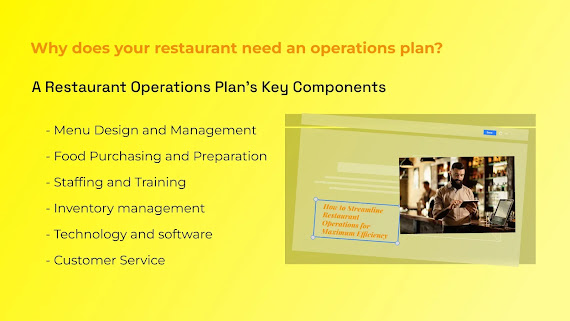9 Restaurant Technology Trends to Consider in 2023
To enhance the customer experience and maintain competitiveness, restaurant owners must embrace modern technologies. Navigating this ever-changing landscape, whether by tapping into new revenue streams, integrating contactless delivery systems, adapting to evolving food and beverage trends, or leveraging smart technology, is vital for operational efficiency.
From the resurgence of AI applications to optimizing kitchen operations and delivering personalized experiences, there are myriad ways for restaurants to utilize technology to enhance their offerings, streamline their operations, and elevate customer satisfaction.
In this article, we will explore some of the prominent restaurant technology trends for 2023.
1. Online Ordering Systems and Delivery Apps
In an environment where restaurants face regulatory restrictions and stringent hygiene measures, online food ordering and "no-touch" home delivery services remain integral to the industry. This trend shows no signs of waning, as people increasingly favor online food orders delivered to their doorsteps.
Notably, the global online food delivery market is projected to reach $223.7 billion by 2027, according to Statista. While third-party food delivery services like DoorDash, UberEats, and GrubHub continue to be essential for businesses without in-house ordering and delivery systems, more restaurants are developing their own integrated apps and online platforms to foster direct customer relationships.
2. AI and Machine Learning
The year 2023 has seen AI take center stage, driven in part by the release of OpenAI's generative AI chatbot, ChatGPT. AI and machine learning solutions are gaining traction in the restaurant industry, with 70% of businesses showing interest, according to QuBeyond.
Applications of AI in the restaurant sector include chatbots for menu navigation and customer interactions, voice ordering systems, and dynamic pricing strategies. The promise of AI and machine learning extends to areas like optimizing restaurant margins and enhancing operational efficiency, although the full impact is yet to be determined.
3. Contactless Payment
Contactless payment is becoming increasingly prevalent in the restaurant industry, allowing customers to pay using smartwatches, smartphones, or smart cards via apps or touchless devices. This technology was gaining momentum even before the pandemic but has since become the norm.
Statistics indicate that approximately 53% of POS transactions will be contactless within five years, with the global value of contactless payments projected to increase by 300% to $6 trillion by 2024. Contactless payment not only offers speed and convenience but also hygiene and safety benefits, making it crucial for restaurants to invest in mobile and digital payment solutions.
4. Ghost Kitchens and Virtual Brands
Ghost kitchens, also known as virtual or dark kitchens, have emerged as a rapidly growing segment in the food service industry. While established restaurants experimented with them, startups received substantial funding. However, challenges such as low sales, operational issues, and safety concerns have raised doubts about their long-term viability.
The industry's outlook on ghost kitchens in 2023 remains divided, with some operators expecting them to become more common while others anticipate a decline. Experimentation with ghost kitchens and virtual brands will persist, but successful companies are likely to consolidate their presence.
5. Digital Kitchen Displays
With the surge in online orders, restaurants are seeking ways to streamline their operations. Digital Kitchen Display Systems (KDS) provide digital menu boards for kitchen staff, reducing the need for staff to move between the front-of-house and kitchen to process orders. These systems are linked to the restaurant's POS system and facilitate order prioritization, dietary preference identification, and inventory management, leading to more efficient and sustainable kitchen operations.
6. Loyalty Programs
Restaurant operators are investing in loyalty programs to boost customer spending and encourage repeat business, especially as customer retention proves more cost-effective than acquisition. Loyalty programs also help restaurants compete with third-party marketplaces. Digital loyalty programs are a focus for many brands in 2023, although they must be expanded while minimizing abuse and fraud.
7. Automated Inventory Management Systems
Automated inventory management software assists restaurants in efficiently tracking food and beverage stock, minimizing waste, and contributing to sustainability. Some companies, like Kitro, employ AI to reduce food waste and enhance operational efficiency. Collaborations with programs such as Too Good to Go can further prevent food wastage by offering surplus food as meal deals.
8. QR Codes
QR codes are increasingly replacing traditional restaurant menus, offering customers a contactless means of accessing menus, placing orders, and making payments. This technology not only reduces customer wait times and enhances satisfaction but also aids contact tracing in some regions. QR codes provide a cost-effective solution to restaurants and improve overall hygiene.
9. Customer Service Chatbots
Chatbots are being integrated into restaurant websites to enhance customer service. These AI-driven systems can guide users through websites, take orders, offer incentives, and address customer inquiries efficiently, fostering loyalty and encouraging repeat visits. Chatbots also reduce incoming calls, allowing staff to focus on in-house patrons.
In conclusion, restaurant technology in 2023 is marked by a wide range of innovations aimed at enhancing customer experiences, improving operational efficiency, and adapting to changing consumer preferences.




Comments
Post a Comment